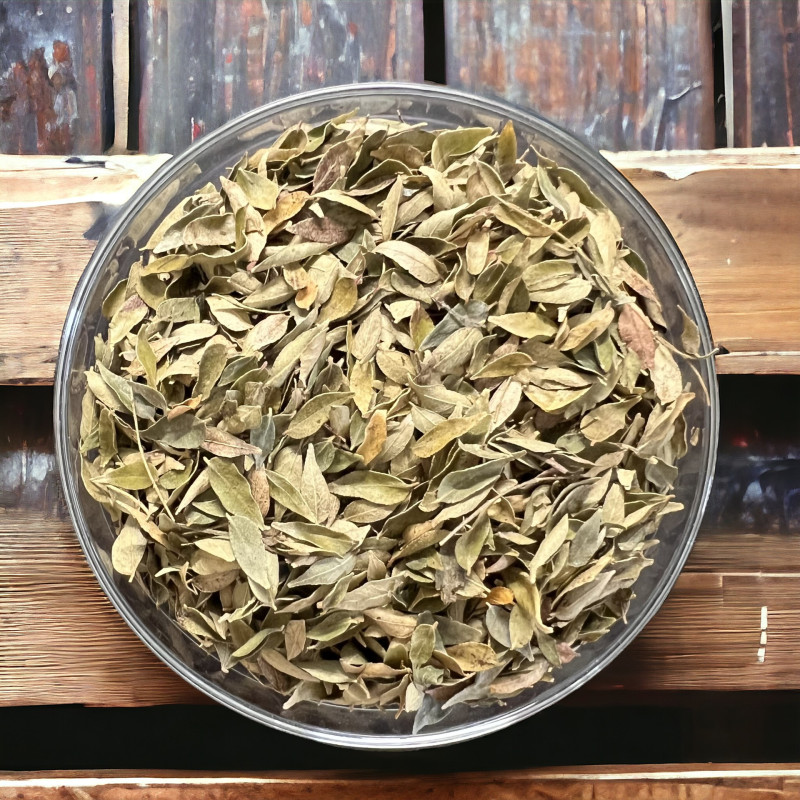
Reference: carrymadras


It forms the base of most Indian, Sri Lankan, and Réunion Island massala blends.
Its flavor is mild, slightly peppery, with a hint of nutty and green tea notes.
 Delivery
Delivery
Mondial Relay
 Returns
Returns
See conditions
 Payments
Payments
100% secure
- Produit livré en sachet refermable -
°°°
Culinary and Other Uses
Kaloupilé leaves resemble both bay and verbena leaves in appearance. They are primarily used in Indian, Sri Lankan, and Burmese cuisine, though the tree is also found as far as Thailand and Vietnam.
The leaves have a mild, peppery aroma with a hint of green tea. The flavor is gently peppery, slightly bitter, with nutty and green tea notes.
Kaloupilé should not be confused with green curry (a spicy Asian spice mix) or with the plant known as “curry herb,” a fuzzy, white-leafed plant found in garden centers, which is unrelated and best consumed in moderation.
Kaloupilé is a fundamental ingredient in many massala and Indian curry blends. However, it is far from the only component in these rich spice mixes; rather, it forms a base. Fresh leaves, if available, are typically grilled and ground into the spice mix or sautéed with onions before being incorporated into the dish.
In traditional medicine, the tree’s roots, bark, and leaves are used. When brewed as tea, the leaves may help lower blood pressure. Crushed with rice bran, they are considered effective against colic. The plant also contains the carbazole alkaloid girinimbine, which in vitro studies suggest may inhibit the growth of human liver cancer cells.
Who am I?
The tree, with slender trunk and branches, can reach up to 10 meters in height. Native to India, it also grows wild in Northern Thailand. It was introduced to Réunion Island by Indian workers after the abolition of slavery, where it has become so well-adapted it’s now considered invasive.
The leaves are arranged along a central stem, similar to sumac, measuring 2 to 5 cm in length and slightly narrower. The fruits are edible, shiny black berries, though the seeds inside are toxic.
A Bit of History:
Its scientific name is a combination of the names of the two botanists who discovered it in the 18th century, Johann König and Johan Andreas Murray.
Data sheet
 Franck L.
Franck L.
Pas encore gouté, j’aurais préféré des feuilles entières

 Franck L.
Franck L.
Pas encore gouté, j’aurais préféré des feuilles entières

Reference: carrymadras
Reference: 20822401
Reference: 30803202
Reference: 20825701
Reference: 20822401
Reference: carrymadras
Reference: carrymadrasdoux
Reference: 20818101

It forms the base of most Indian, Sri Lankan, and Réunion Island massala blends.
Its flavor is mild, slightly peppery, with a hint of nutty and green tea notes.